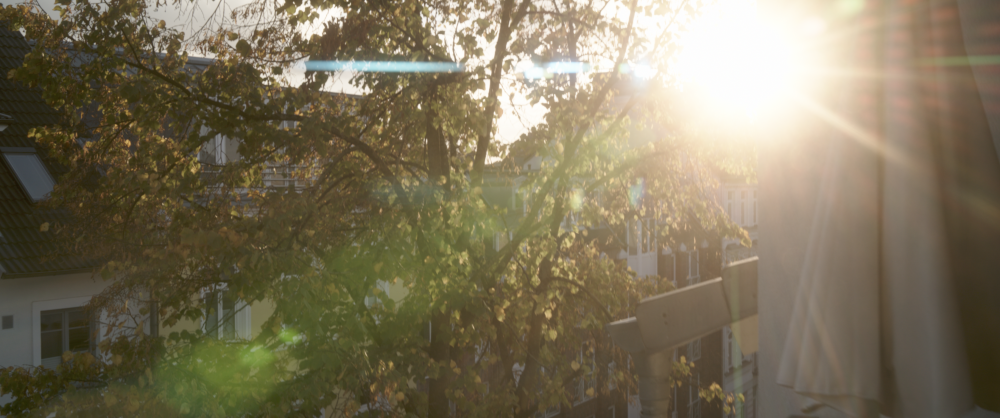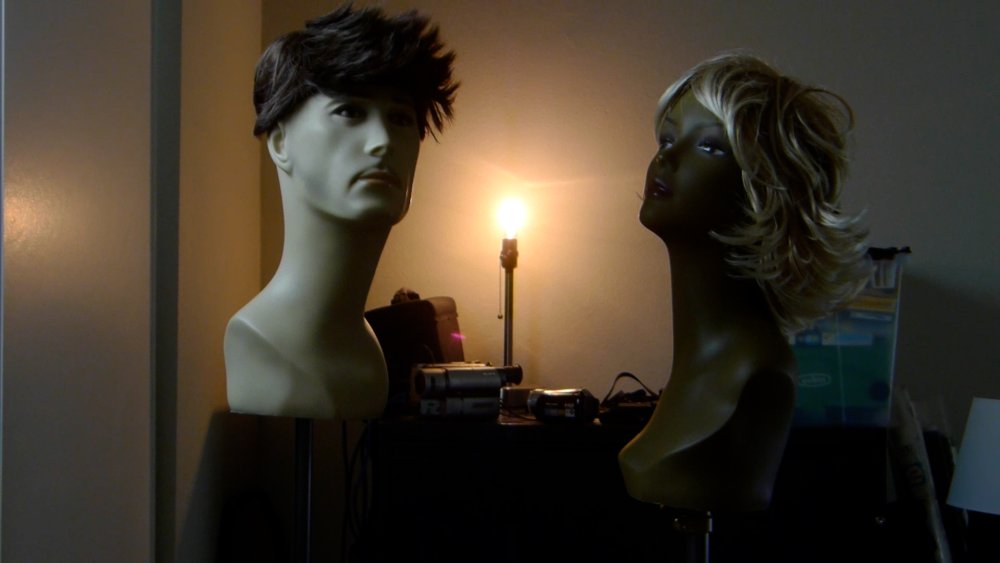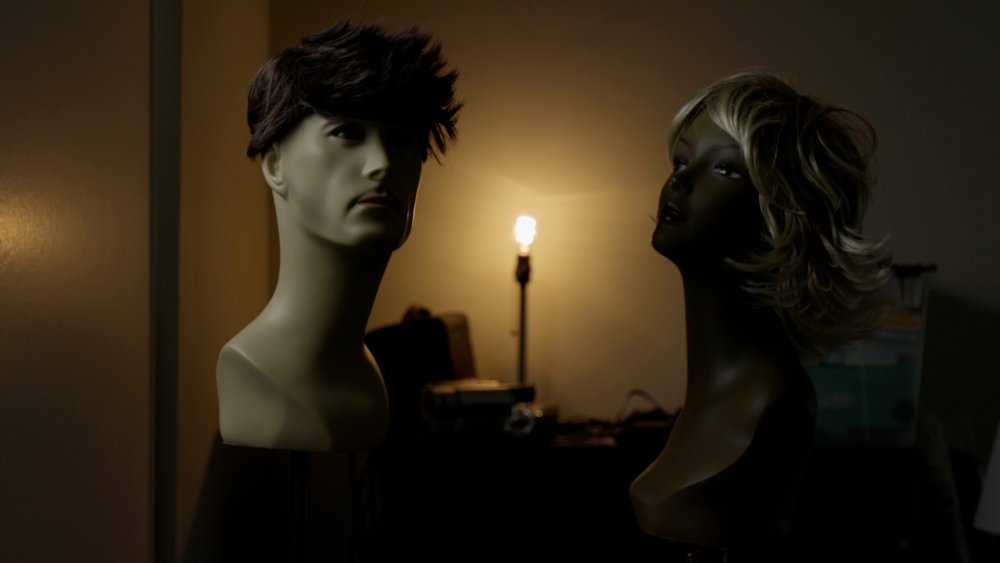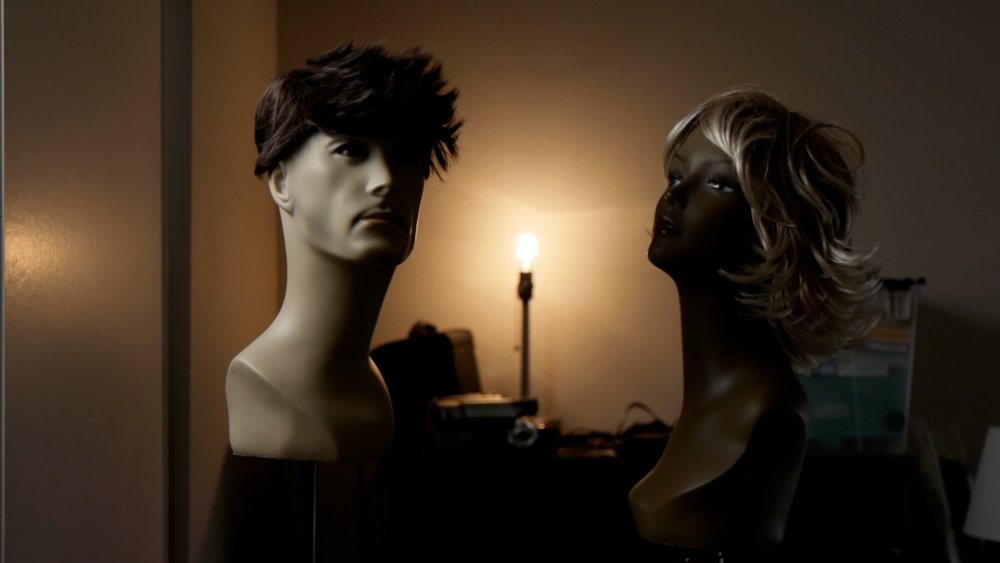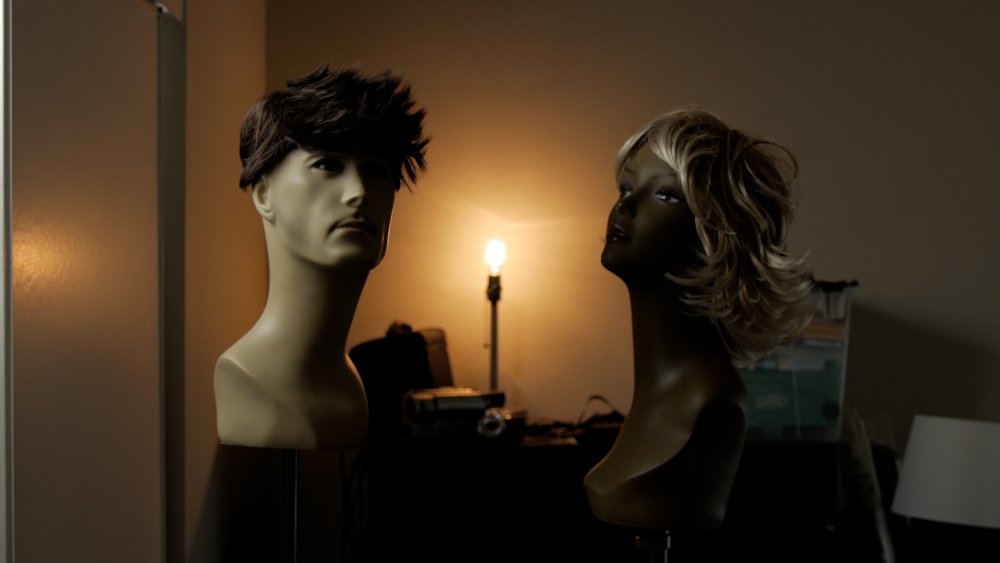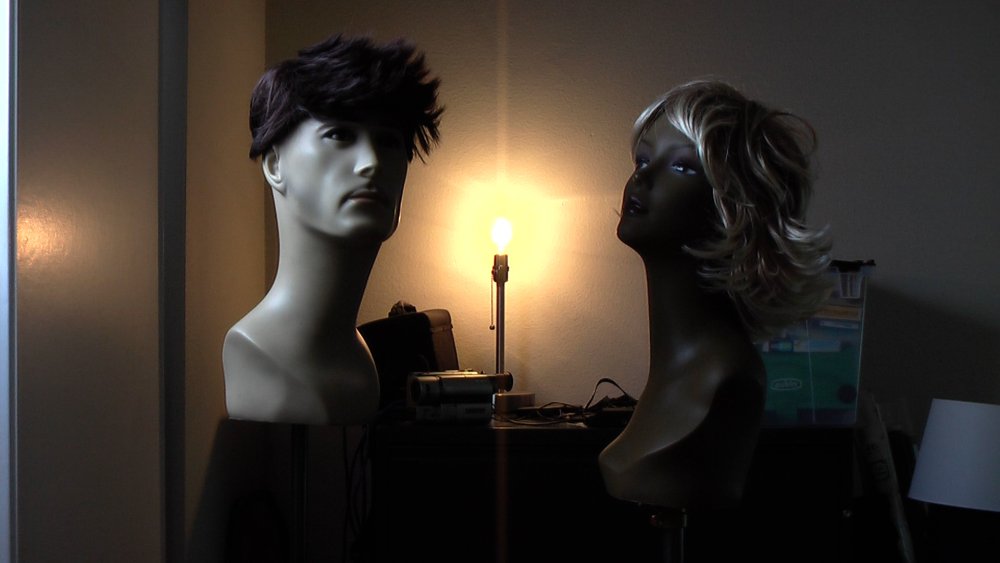Leaderboard
Popular Content
Showing content with the highest reputation on 11/04/2022 in all areas
-
Canon R6 Mark II Announced
Kisaha and 2 others reacted to herein2020 for a topic
This is without a doubt my #1 annoyance these days across the Canon line. The R5, R6, R6II, and R7 all remove the histogram and electronic level when recording, I think literally no other camera maker does that at least none I have shot with. They also finally added aspect ratio guides and one of them is that magical social media 4:5 guide....the R5, R7, and C70 don't even have this. The S5 had this in 2020. I do find it strange they added false color but not the WFM, I use the WFM way more than I use false color in the C70. To me false color is best when you have control over the lighting, the WFM is better when you have no control and just need the scene to fit within the DR of the sensor so I would much prefer the WFM over false color. It is still promising though that they are starting to add more video tools to their hybrids. We might even get shutter angle in the R6IV. Also, is it just me or does it feel like a lot of these features could have been added via FW to the R5, R6, and R7? (False Color, Aspect Ratio Guides, overheating removed). I also think its odd they forced external raw via that terrible micro HDMI slot instead of bringing the C70's Canon Cinema Raw Light @ 30FPS to the R6....maybe overheating concerns, or maybe that's the cripple hammer. None of this is meant to take away from the R6II, I keep asking myself if I would have gotten the R6II instead of the R7 for a bcam/gimbal cam for the C70 and I don't know yet. The R6II is a pretty decent upgrade across the board, but I do truly enjoy the R7. Of course the R7's crop sensor and line skipped 4K60FPS is a pain to deal with and is the two things I think really puts the R6II ahead of the R7. One thing I noticed in the R6II's review video from DPReview is that terrible IBIS wobble, the R7 does not have that at all (probably because it is a smaller sensor), and I would still trust the R7 in the overheating department vs the R6II at least until there's a lot more data available.3 points -
More grading fun with cheap Lumix FZ47 CCD sensor bridge camera
ntblowz and one other reacted to dreamplayhouse for a topic
Some video from my daughter's dance show. Trying to get a 16mm film look - grading in Resolve. No audio. What do you think? https://www.dropbox.com/s/n8clsz53kl2olc5/fz47 lena dance 16mm.mov?dl=02 points -
My room is a 10 meter screen (400 inches?) so not huge at all compared to IMAX. The aim isn't really immersion but rather the resolution and infinite contrast. Most IMAX theatres use linked 2K projectors for slightly above 2K perception. I'm usually on the fourth row 🍿 ICE is another fun concept they've got here :2 points
-
I think we no longer see online the "MOAR MEGAPICKLES" desire we used to see a decade ago, or even as recently as say just five years ago. Once we got into the twenty plus megapixel range (with a few extreme thirty and forty plus options for those super megapickles nerds to splinter off into and leave the rest of us alone with our 24MP cameras) then I think the burning desire for more megapixels largely died away for many photographers. You even saw some cameras go backwards in terms of their resolution. Such as the Nikon D7200 to Nikon D7500 has less megapixels with the next camera than the one beforehand. A very clear sign that megapixels is no longer the #1 thing photographers look to when buying a camera like they used to. Who knows, maybe one day we too in the video world will experience this! Wouldn't totally 100% shock me if the X-H2 has "so-so" 8K but the X-H3 has stellar 6K as the max resolution it can do.2 points
-
You seem to be forgetting a major chunk of hybrid shooters: still photography. That is what those AF lenses are first and foremost intended for. They usually only double as video lenses. Nobody is "naive" when buying AF lenses or wanting solid AF performance. Everything isn't a conspiracy to take advantage of you lol. The constant referencing to cinema production is the only "naive" argument here. Cinema production work in hyper controlled environments with staging and actors that move only if/when director decides. They have huge crews including assistants and focus pullers. Whereas 98% mirrorless hybrid shooters are solo working in uncontrolled environments, shooting real scenes: people, animals, vehicles, kids, live events, low light etc. All scenarios that strongly benefit from AF. If you're truly into cinematic images, workflow and anti-AF, anti-IBIS etc then simply don't buy a hybrid camera. Get a cine camera. If you're on a budget get a Blackmagic, some vintage manual lenses. You'll be set. But no need to discredit the majority of users out there that value things like AF.2 points
-
I'd probably do one exposing to what looks normal per camera, one exposing for highlights, and one where both are the exact same aperture/ND. I can say having used them together on jobs the Sigma is amazing in terms of image quality. The workflow is just a pain to where I wouldn't use it on most projects as a main camera. But it punches way above its price tag.1 point
-
SIGMA FP with ProRes RAW and BRAW !
Leon Postma reacted to TomTheDP for a topic
I could possibly borrow one. Would expose them at the same aperture?1 point -

Canon R6 Mark II Announced
ade towell reacted to Django for a topic
Yes in this French review at around 14 minutes:1 point -
Very nice. Obviously it's ungraded (a colourist would do lots more work) but it really reminds me of the image from a high-end cinema camera. I don't know what it is about this image, and the other images from the FP, but they seem to have that subtle rendering of colours and dynamic range that high-end cameras have. It's obviously uncompressed, but these days that's less of a differentiating factor, especially with >4K RAW captures. I had a long discussion on the colourist forums about if the Alexa files have any tweaks built into their files, and someone posted a latitude test which showed that between clipping and the noise floor, normalising the luminance of each under/over image was a perfect match for the the properly exposed one. This shows that the RAW output is purely logarithmic. If it wasn't purely log (e.g. if it tinted the shadows or desaturated highlights etc) then you wouldn't get the same image when over/under exposing and normalising on post. What that said to me was that the magic of the Alexa is either in their LUT (and can therefore be accessed by anyone) or is a factor of the sensor being a very high quality capture of what was in the scene. I think it's probably both. I mention this because I think that the FP is also an unusually high-quality sensor that also delivers a very high-quality capture of what was in the scene. I think it was earlier in this thread that I posted some tests of the FP that showed it was able to capture a very wide gamut, IIRC similar to the Sony Venice. On paper the FP is really not the right camera for me, but the image is so compelling that I can't eliminate it from my short-list for my next camera, whenever I end up doing an upgrade. In terms of image quality, I really think that the FP could be the last camera you'd ever need to buy.1 point
-
Canon R6 Mark II Announced
Kisaha reacted to herein2020 for a topic
According to my bank account Canon is winning (C70, R5, R7, lenses), so yes I am very critical of Canon because there's so many very simple things they could do in FW to make big wins in the customer satisfaction department, but at the end of the day for me nothing still checks as many boxes as Canon so regardless of their shortcomings they won regardless. Their massive lens ecosystem is what holds many users, myself included, completely hostage to their whims and here lately they are producing cameras that are just good enough to make it very difficult to leave once you are in. They fixed the showstoppers for me (no dual slot video recording, no overheating during video recording even here in FL heat, XLR audio input options), and they pair that with competitive dynamic range sensors, industry leading AF, Canon colors, and acceptable IBIS. Honestly, the only real criticisms I have left is no electronic level in the C70, terrible build quality of the C70, video tools disappear while recording in the R5 and R7, no WFM or shutter angle in the R5 or R7, freezing in the R5 requiring a restart (super annoying BTW), EVF latency in the R5 and R7 (no idea how people are working around this one), and no 4:5 aspect ratio guides in the R5, R7, or C70. Canon could knock the R6II out of the park with internal Cinema Raw Lite at 30FPS internally since we know they can do it to SD cards (i.e. C70); they probably still will if Sony looks like they are doing too well, but even without it I definitely consider the R6II a pretty serious hybrid camera; far more than the first one as long as overheating really is fixed.1 point -
1 point
-
As a 1st AC (or heck, as a cameraman) my personal record is going through THIRTEEN batteries on a (not even long!) shoot with an original BMD Pocket Cinema Camera for a music video.1 point
-
Let me send you one more pic as a prove of concept. ISO 800, ARRI Rec709 conversion LUT and only a little bit more contrast added. Nothing else done in post. Lens used: Sirui 50mm T2.9 1.6x anamorphic plus my usual 1/4 pro mist filter. At least for my taste the colors and the highlight rendering is spectacular and leaves nothing to be desired. 🙂1 point
-
Exactly. Infamous for their weakness in low light. 99% of the time when newbies obsess over "low light" when choosing their next camera (such as FX30 vs FX3) they're being idiots, because even the one they think of as "bad in low light" is more than good enough! Fovean however... even their next generation sensor? Nah, not so confident about that!1 point
-
Like I explained above, since EOS R you can use parts of the LCD as track pads (similar to a laptop). so you can have the bottom right or bottom left (works for me as a lefty) of the LCD tracking the AF point with your thumb while still having a firm grip with both hands AND your eye on the EVF. As for stabilisation, well that's another main area where AF comes in handy.. I'm talking about gimbal work of course.1 point
-
Well I do live in the city who invented cinema theatres and my multiplex is the most advanced in the country so I guess I have it pretty good (unlimited membership too but unfortunately very little time to actually go as often as I wished). The Onyx 4K OLED room is pretty nice I must admit. Haven't seen that many films there (again I don't really feel like paying premium unless its a Star Wars, Batman, Nolan or something really epic) but yeah you can definitely tell its next level.1 point
-

Sony FX30 (S35 FX3)
MurtlandPhoto reacted to kye for a topic
Good points. Perhaps the first thing I should say is that I've never declared that MF is superior, just better for me, and better for some people, although probably a minority at this point. I'm trying to engage in a more nuanced discussion, rather than it just being one-sided. Nothing is all-good or all-bad, and everything depends on perspective. In terms of "getting the shot" the situation is more complicated than just AF. The primary one, for me, is shooting stable hand-held footage. No point slightly improving my focusing hit-rate if I'm going to lose more shots to shake than I gain by having better focus. I find that shooting MF with left-hand under the lens gripping the MF ring and right-hand on the cameras grip is a pretty good approach if the camera is lower than eye-level. If it's above eye level then I'll normally be lifting it high above my head and so I'll normally close the aperture a bit and pre-focus and then hold onto something near the end of the lens that doesn't move in order to keep my two hands as far apart as possible. I don't normally miss focus on these and the screen is normally too small for anything except composition so this setup probably doesn't matter either way. My favourite position is looking through the EVF with left-hand doing MF and right-hand on the grip (like above), and I'll be getting three points of contact. Stabilisation isn't normally a big issue in this setup as I wouldn't normally do this unless I was stationary, whereas the other setups are often when I'm walking or squatting or holding the camera out at arms length etc. There's no good way I've seen to use touch-AF on the screen while also stabilising the camera with both hands, so that doesn't beat MF in terms of getting the most shots. It also doesn't work when using the EVF (pretty sure I'm pressing the screen with my face at this point too!). I could potentially use the thumb of my right-hand on a joystick, although that would really lessen the grip from that hand as it would really limit the amount of pressure I could apply with my thumb so I wouldn't really be holding the camera much with that hand. Thinking about it now, MF loses me far less shots that stabilisation does. If it was the other way around then I could absolutely see that my cost/benefit assessment of AF would change substantially. The other thing to consider is that, at least in my eyes, imperfect MF still has a loose kind of human feel that suits the content that I shoot, but when AF misses focus or is in the process of acquiring focus the aesthetic just isn't desirable. I tend to miss focus or fail to track a subject when there are lots of things happening and lots of movement, so it suits the vibe. If I have a second or two to adjust aperture and focus then I don't miss those shots. When AF misses a shot it just seems really at odds with the aesthetic that the rest of the image is creating. Watching AF pulse, or rack focus either too fast or too slowly always seems so artificial, like a robot having a mal-function. Also, I'm not sure how many AF mechanisms are able to ease-in? They seem to rack at one speed and instantly stop on the subject, or pulse momentarily (which is worse). This is probably made worse when the focus speed is set too high, but I'd suggest it's still a factor. "Getting the shot" isn't just making sure it's exposed and focused properly and not too shaky, it's about getting the shot that has the most chance of making the final edit. Getting the technical things right are the bare-minimums in this context and only get a shot to survive the assembly stage of the edit, it's the subject matter and the aesthetic that determine if the shot makes it to the final edit, and if the shot is interesting then technical imperfections can be tolerated. I can imagine that if you're shooting commercially, the equation between technical imperfection and aesthetic is very different, so would generate different decisions based on different trade-offs.1 point -
I dunno every cinema room is different. different screen sizes, resolutions, seating arrangements. Since COVID here all seating is booked online (although I've been doing that for years prior) so I always manage to get seats exactly where I feel most comfortable and ideal so viewing angle or distance is never a problem. YMMV.1 point
-
Redshark just put out their review of the FX30: https://www.redsharknews.com/sony-fx30-reviewed-a-gateway-drug-to-sonys-cinema-line Pentax has made attempts at the mirrorless market. But each have been a little odd. There was their Q Series (basically smartphone sized sensors, but with interchangeable lenses) and another "mirrorless camera" which was still using the K Mount!! (but mirrorless...) Sure, and in the stills worlds then they've always talked a lot about using native mount lenses. That has always been a lot more normal in those circles. But we're talking about forums such as EOSH/dvxuser/dvinfo/etc, where are video focused, it is only in more recent years that there has been a heavier push for users to go all in with native lenses. lol, yeah right, sometimes that is true! But very often it is all kinds of random chaoticness, and we just have to roll with the punches. There are many 1st ACs who never get focus marks these days, haven't in years. That's simply not the type of TV Series they work on. And all of those "real scenes" has been shot with manual focus for many many years. How do you think Reality TV for instance gets shot? Do you think they've been always using autofocus all these years? Do you think each of those cameramen get to have their own 1st AC?? No, and no.1 point
-
Thank you Kye 🙂 Totally agree that the sensor is a gem, and with the knowledge provided above you get a consistent workflow as well.1 point
-
I'd also be particularly interested in an FPii if they added: tilt or flip screen IBIS (OIS doesn't stabilise rotation, which has ruined shots of mine on many occasions) improved compressed codecs (the h264 in the FP was very disappointing compared to the RAW) I do wonder though if those additions (especially IBIS) would kind-of make it a different type of camera altogether. Hollywood really dislikes IBIS (as the sensor moves around even when it's off) so adding IBIS kind of eliminating it from the world of cinema cameras, however, they didn't really market it as a cinema camera to being with, despite it being a 4K FF uncompressed RAW camera, so I'm not sure who / what Sigma thinks this camera is for.1 point
-

More grading fun with cheap Lumix FZ47 CCD sensor bridge camera
hyalinejim reacted to QuickHitRecord for a topic
For the sake of discussion, here's a little comparison from a while back between all of the smaller cameras I own (the SD9 is a CCD camcorder): ^FZ47 ^EOS-R ^GH1 ^G85 ^SD9 The two CCD cameras have that kind of muted, undersaturated skintone that I associate with some of the older S16 film stocks (though I really don't like the SD9 as much -- which is just as well, because you can't turn the auto ISO off while shooting).1 point -
Considering the economics, I'd suggest that the shift towards AF and native lenses is (at least partially) due to manufacturers taking advantage of naive consumers by pushing these self-serving concepts in order to sell more lenses and lock users into their own ecosystems. I say 'naive' because huge numbers of internet users want AF and cinematic images, despite the fact that cinematic images are generated mostly by adapted manual lenses.1 point
-
I was born in the 70’s but don’t still live in that era 🤔 To be fair, they aren’t on my radar. I believe they have a couple of pretty decent DSLR’s but otherwise are not players in the mirrorless market?1 point
-
I don't see it that way at all. I purchased R6 on release two years ago and it paid for itself almost immediately so a fantastic investment for me personally. It also remains the only camera in its category that can shoot 4K60p without a crop. Z6II, A7IV & S1 all have an APS-C crop when shooting 4K60p. And at the time of its release, Sony only had the A7III that couldn't even do 10bit. So the R6 was for me already way ahead of its competition and hit above its category. It did have one major caveat: overheating. I learned how to work around it but it was still a serious risk factor just like the A7IV currently is. Fixing that was urgent (R6 is their best seller) hence why a MK2 came after only 2 years. I don't think it was fixable in firmware like with R5 due to its hardware build. Again the original R6 is such a good camera that it doesn't really need that many enhancements. Yet Canon added a bunch of low-key refinements. In the CVP review, the guy opens with "Honestly the R6ii may be my favourite mirrorless camera I've ever used". That's a pretty strong statement and endorsement coming from a reviewer that has access to every single camera under the sun. Is the camera perfect? No. But none really are in this category. Histogram disappearing when recording yeah bummer. Then again a histogram always on isn't that great on a 2.9" display. Use an external monitor for permanent exposure/assist tools. It is great they added false colour. Yeah WFM would have been better but neither Nikon or Sony offer it even on their flagships. R5C does but all those advanced cine assist functions seem to drain the battery. In the end, you can always look at the glass either half empty or half full. For me at its price point & category, the R6II is the best all-rounder FF mirrorless on the market. I suspect an R5II will be next with even more refinements.1 point
-
Showing all the recording modes/ratios/crops for the S1H:1 point
-
Just catching up on this thread, and the only thing I can think to say is Damn! Those images from @OleB are just wonderful. Great subject / lighting / lens of course, but the sensor in this thing truly does not disappoint!1 point
-
You've got it backwards.... rumoured cameras are absolutely killer, it's the ones that get announced and released that are disappointing in almost every aspect! Just read any "what camera should I buy" thread - there's always "wait for the X to be released" recommendations 🙂1 point
-
How useful is 8K / 12K to you?
hansel reacted to newfoundmass for a topic
The thing I keep going back to, even after people talk about the benefits of being able to downscale it to get even better 4K, is that we really aren't even using 4K to its true potential and probably never will before it gets replaced by 8K. Even downscaling to get "better" 4K feels silly, because the difference is so negligible unless you're watching on a big enough screen. It feels weird to argue against higher resolutions, and I don't necessarily view it like that in my head, but this rush to 8K and beyond feels more like a way to charge us more for cameras than a genuine need or necessity. Give me a 4K camera that can film 120fps without any risk of overheating and with all the features we are genuinely asking for before trying to entice us with 8K that 98% of us don't need.1 point -

Canon R6 Mark II Announced
herein2020 reacted to hyalinejim for a topic
Lol! For entirely irrational, emotional and nostalgic reasons I often consider moving back to Canon for video. But it's stuff like this that acts as a reality check on my daydreams. At the moment I'm loving the spotmeter on the GH6. I look for something white, set exposure to +2.3 stops with the spotmeter and am done. OK, my footage might be out of focus but at least it's well exposed 😂1 point -
...coming to a neighbourhood near you.1 point
-
Even though I have n* number of cameras capable of shooting 4K and above, I don't have a 4K TV let alone an 8K one. If I was absolutely realistic about the number of people even remotely interested in watching anything that I've shot then, including myself, then my total audience is precisely one. And on a lot of occasions, this number can actually be less than that as I'm barely interested in watching any of it myself these days either. So, on that basis, if I was to only have cameras capable of shooting 1080p then I would have a 100% match with the display technology of my audience. That doesn't stop me wanting all the Ks though. n* - precise number redacted out of acute embarrassment regarding the extent of my addiction.1 point
-
If only Samsung was here about to launch their Samsung NX3 with 8K 60fps 10bit h265 internal so as to push the limits once again of what mirrorless can do. (none can currently!)1 point
-
Hi all, I want to come back on the topic of ISO behavior of the fp. Have tested the camera further over the last weeks and found something interesting. Think I understand now how the camera works in detail. Between ISO 100 and 800 the camera is working in CINE EI mode, with a native ISO 500 following the same rating logic as they have rated ISO 3200 (about 5.42 stops above and 7.04 stops below 18% grey). That means the clipping point is as well the same. Do not understand why they have chosen to declare ISO 100 as the 1st native ISO for video mode. Rather untypical for a cine camera. When checking the false colors on the Ninja V in native (V-Log) you can see the clipping point jump up and down accordingly while selecting the ISO values mentioned above. That means your native selections for ISO should be 500 and 3200 if you do not want to use Cine EI. Nothing else. Just imageing the camera has to be loaded with film stock. You can choose a lower or higher sensitivity. Than compensate too much light with a ND filter, to little by letting in more light. ISO values 1000 to 2500 are achieved with analogue gain and will sacrifice image quality. Same applies for all values as from ISO 6400 and above. However if you want to use the benefits of Cine EI you can use this knowledge to your advantage as well. Lower the preview ISO below 1st base ISO 500 you will get more dynamic range shifted to shadows, shift it upwards to ISO 800 you will receive more highlight details (good for rolloff on a bright day). With the 2nd base ISO 3200 you have the option to get some more highlight headroom (to be precise 2/3 of a stop) if you go up to ISO 5000. Have attached the chart provided by Sigma for visual reference. That mixture of using a CINE EI and (analogue gain) ISO is rather special. Some cameras give you the option to use either or, but no camera I know is doing the same as the fp. Hope this will proof to be a value for some of you to squeeze the best quality out of the fp. 🙂1 point
-
Canon R6 Mark II Announced
herein2020 reacted to Kisaha for a topic
I was expecting this camera later in spring time, I just got recently the R7 and lenses..I will probably stick to the plan and save money for spring, I mostly have sound and A.D jobs anyway..1 point -

Canon R6 Mark II Announced
solovetski reacted to Django for a topic
As an R6 user, I can tell you this is going to be Canons best selling camera (which R6 already is). It finally eliminates recording time limits and overheating at 4K30p. That alone is major. Adding false color, specific easy video menu, focus breathing comp and other video centric tools is fantastic. DPAF 2 is indeed killer. The faster read out times surely means lower rolling shutter. Really seems like the perfect mid-tier mirrorless. I don't see any cripple hammer, aside from no ALL-I codec so you'll need an M1 Mac to edit the 10-bit Log footage. Aside from that detail this is an A7IV killer. Needless to say my R6 is going up for sale today. Here is a pretty good rundown of the camera:1 point -
Canon R6 Mark II Announced
herein2020 reacted to newfoundmass for a topic
Seems to be essentially what the R6 should've been from the start. Kudos to Canon for keeping the price the same, I guess.1 point -

Nikon Z9 / Firmware 2.0 Official Topic
Juank reacted to Andrew Reid for a topic
It certainly would be hard to beat a Z9 for years to come. Although I can imagine Fuji putting their X-H2 processor in a GFX100S Mark II at some point, the Z9 is unique in that it is the only one to stick two fingers up at RED and go all guns blazing with internal RAW. Canon with their sweetheart deal have a decent compressed 6K RAW codec on the R3 but it has hardly any options or frame rates compared to the Z9, which has about 5 pages of them! Including the crop mode and 120fps 4K N-RAW. I also feel the Z9 might have the distinct advantage over R3 in having that handy E-mount adapter compatibility. I have a shed load of E-mount lenses including the Sigma 24-70mm F2.8 and would be nice to put them on the Z9. It is hard to see how Nikon could have done a better job really... Perhaps shave 300g off the weight and have a mechanical shutter, which I might or might not miss depending on how the electronic one holds up. Also in the next firmware it would be nice if they put ProRes Proxy and LT 4K/6K/8K in there like the X-H2 for smaller file sizes (rather than just the HQ variant). Has anyone seen it covered anywhere about N-RAW bitrates and whether the 4K RAW is binned or oversampled from the 8K sensor readout? If I can put about 10 older cameras on eBay and replace them all with one, I'd probably still not be able to part with a few 'tricks' like uncompressed CDNG on the Sigma Fp-L, with the mojo that has in the crop modes, and a dedicated camera for my Super 16mm c-mount lenses, although these will mount on the Z9 too, remains to be seen if the new Firmware 3.0 lossless zoom goes all the way to 2x crop.1 point -
I also still want one. I think it is the single best standalone camera for my specific hybrid needs. I love a gripped body even though it goes against my preference for something small and discrete. Getting one as my principal tool would also mean a pair of OM-1’s as sidekicks and I loved that thing. For all of 5 minutes before I sent it back. I couldn’t use M4/3 as my main system but secondary, mainly static or gimbal, I sure could. Sitting on my fence however and seeing what shakes out over the next 2-3 months before fully committing, but that Z9 keeps calling to me and does something nothing else can, 8k 50p video internal and pull the stills from it in certain scenarios that require both from just one camera at the same time. Of all the tools currently available, the Z9 is the only one with ‘Game Changer’ engraved on it.1 point
-

Nikon Z9 / Firmware 2.0 Official Topic
Juank reacted to Andrew Reid for a topic
WEX showed it in-stock for all of 10 seconds yesterday. Apparently a lot of shipments going out at the moment, but apparently not enough to satisfy the hordes! Even I want one, and I have 200 cameras! That clear-image zoom is going to be great for c-mount lenses.1 point -
I don't think any manufacturer can win on these boards. Yeah, Canon gets a lot of criticism. A lot. But so does Sony. People say their older cameras had intolerable colour science, their lenses are too expensive, their image is soul-less, people who like them are shills etc. Good luck having a conversation about Panasonic without being drowned out by people talking about auto-focus like they have Tourettes Syndrome, and if you're talking about a MFT camera then why would you - the mount is dead don't you know? and didn't Panasonic used to have a cinema camera division......? Fuji is criticised for not having FF options, despite offering S35 and a range of Medium Format cameras that produce lovely images, and is currently laid bare with people doing extractions of the Cr channel and wondering WTF they are doing to the image to make them so awful..... in a dedicated thread. Sigma is loved for having one of the nicest sensors in many years, provides 4K and high-res models to choose from, but is criticised heavily because it is secretly the successor to the OG BMPCC with lovely images and almost nothing else going for it. Plus, you know, almost no-one bought one. Olympus? Aren't they bankrupt? Did you know they released a new camera recently? No? Neither did anyone else - there's no mention of it on here at all. The worst kind of criticism is being ignored. Pentax? The 80's called and wants it's camera back! *cough* Samsung *cough* NX-1 *cough* better go have a covid test......0 points
-
It’s 26, same as the Fuji and probably the same one, just Bayer and not X Transgender. I can understand why some would not want or need the 40mp sensor but it’s like a drug, - once you have tasted this higher res stuff, it’s difficult to go back! When I picked up the S1R last year it was an immediate ‘wow’ moment. When I look at 24mp files now, they ‘lack’ something… OK, got to do a little peeping maybe and depends on the size of the screen and most clients (wedding) would never know, but I would know and that is part of it.0 points


